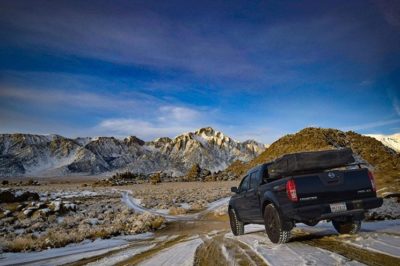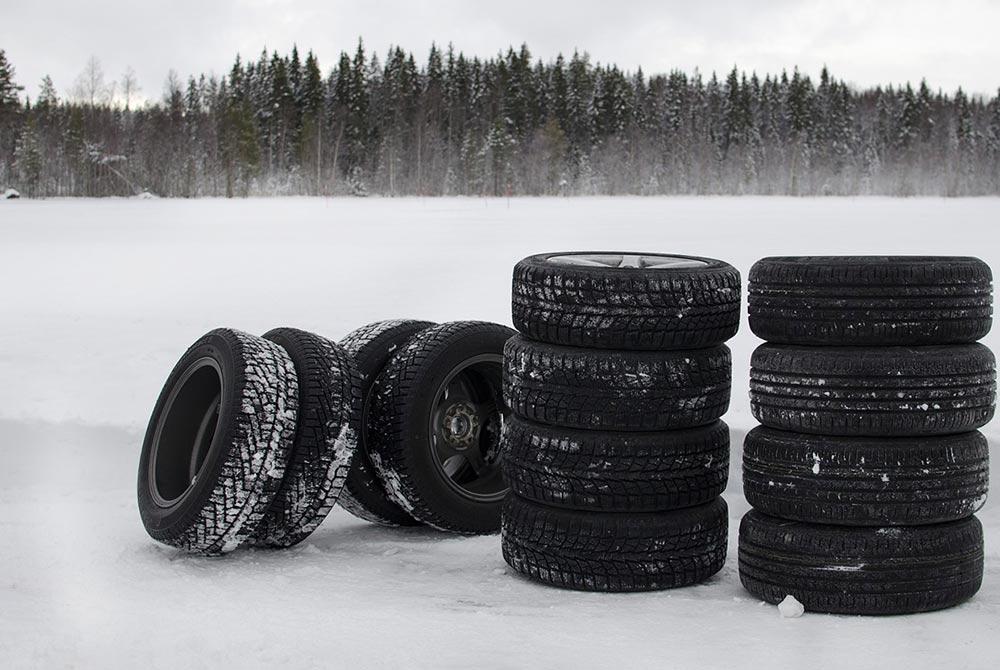It is important to maintain your winter tires to ensure safe driving during the colder months. Here are some tips:
– Check the tread depth and condition of your winter tires regularly.
If they are worn down, replace them.
– Keep your tires inflated to the proper pressure.
– Store your winter tires in a cool, dry place when not in use.
Most people know that winter tires are a must-have in snowy, icy conditions. But did you know that there are some maintenance steps you should take to ensure your winter tires are performing at their best? Here are some tips:
– Check the air pressure in your tires regularly. Cold weather can cause the air pressure in your tires to drop, so it’s important to keep an eye on it.
– Inspect your tires for any signs of wear and tear.
If you see any cracks or bald spots, it’s time to replace them.
– Keep your tires clean by brushing off any snow or debris that may have accumulated on them. This will help prevent premature wear and tear.
By following these simple tips, you can help extend the life of your winter tires and keep yourself safe on the road this winter season!
How to Install Snow Tires | CarGurus Maintenance Tips
How Do You Take Care of Winter Tires?
Assuming you are referring to winter tires specifically designed for use in cold weather and on snow-covered roads:
It is important to take care of your winter tires to ensure they last as long as possible and perform optimally when you need them most. Here are a few tips on how to take care of your winter tires:
1. Store them properly – When not in use, it is best to store your winter tires in a cool, dry place out of direct sunlight. If you have to store them outdoors, make sure they are covered and protected from the elements.
2. Inspect them regularly – Before each season, inspect your winter tires for any signs of wear or damage.
Check the tread depth and look for any cracks, splits or bald spots. If you notice any damage, it is best to replace the tire before using it again.
3. Clean them regularly – It is also important to clean your winter tires regularly, especially if you live in an area where salt is used on the roads during icy conditions.
Salt can cause corrosion and other damage to the metal parts of your tires, so be sure to rinse them off with fresh water after each exposure.
What Psi Should I Drive in Winter?
If you live in an area with cold weather and snow, you know how important it is to have good tires on your car. But what PSI should you drive in winter?
The answer may surprise you – the correct PSI for winter driving is actually lower than what’s recommended for summer.
That’s because in colder temperatures, tire pressure drops about 1 PSI for every 10 degrees Fahrenheit. So if it’s 20 degrees outside, your tires will be 2 PSIs lower than their normal pressure.
Of course, you don’t want to go too low or you’ll risk a flat tire.
The best way to know how much air to put in your tires is to check the owner’s manual of your vehicle. Every car is different, so there’s no one-size-fits-all answer. However, as a general rule of thumb, most cars recommend 32 PSI for summer driving and 28 PSI for winter conditions.
So next time you’re getting ready for a road trip in the snow, make sure to adjust your tire pressure accordingly!
How Often Should You Fill Your Tires in the Winter?
Winter is a tough time of year for your car. The cold weather can take its toll on your vehicle, and that includes your tires. So how often should you fill your tires in the winter?
The answer may surprise you: it depends. If you live in an area with heavy snowfall, you’ll want to check your tire pressure more often. That’s because the extra weight of the snow can put a strain on your tires, causing them to lose air pressure.
If you don’t live in an area with heavy snowfall, you can probably get away with checking your tire pressure once a month or so. But it’s still a good idea to keep an eye on it and top off the air if needed.
In either case, it’s important to make sure that your tires are properly inflated in the winter.
That’s because underinflated tires are more likely to fail in cold weather conditions. They can also lead to poor fuel economy and increased wear and tear on other parts of your car.
So make sure to check your tire pressure regularly this winter – it could save you a lot of headaches (and money) down the road!
Should You Let Air Out of Your Tires in the Winter?
It’s a common misconception that letting air out of your tires will help with traction in the winter. In actuality, it can actually lead to decreased traction and could potentially be dangerous.
If you live in an area with cold winters, you’ve probably been told at some point that letting air out of your tires will help with traction.
After all, it seems to make sense – if there’s less air in the tire, there’s more contact between the tire and the ground, which should theoretically lead to increased traction. Unfortunately, this isn’t the case.
In fact, decreasing the air pressure in your tires can actually lead to decreased traction and could potentially be dangerous.
When there’s less air in the tire, it becomes more susceptible to punctures and changes shape more easily under load. This can cause problems when trying to brake or turn quickly – both of which are situations you’re likely to encounter while driving in winter weather.
So what should you do if you’re looking for ways to improve your traction in the winter?
One option is to invest in a set of winter tires. Winter tires are designed specifically for use in cold weather and tend to have better tread patterns than regular tires that provide improved grip on icy roads. Another option is weighting down your vehicle by filling up any empty spaces – this extra weight can help give you better traction as well.
Ultimately, the best way to stay safe on the roads during winter is to drive slowly and carefully – no matter what kind of tires you have on your car.

Credit: thunderertireusa.com
M+S Tires
M+S Tires are a type of tire that is designed for both winter and summer driving conditions. They are made with a special compound that helps to improve traction in both cold and warm weather. M+S Tires are a good choice for drivers who live in areas with unpredictable weather conditions.
All Weather Tires
Most people think of all-weather tires as a winter tire, but they are actually designed for use in all seasons. All-weather tires have a tread design and compound that provide good traction in both dry and wet conditions, as well as in cold weather. They also typically have a symmetrical tread pattern, which means they can be rotated to evenly wear down.
All-weather tires are a great option for those who live in areas with mild winters, or for those who don’t want to deal with the hassle of changing out their tires each season. They can also be a good choice for people who do a lot of driving in different conditions, such as on the highway and in the city. However, they may not provide the same level of traction and performance as dedicated winter or summer tires.
If you’re considering all-weather tires for your vehicle, make sure to consult with a professional to see if they’re right for you.
Summer Tires
As the weather gets warmer, many drivers start to think about switching to summer tires. Summer tires are designed to provide better traction and handling in warm weather conditions. They typically have a softer compound than winter tires, which helps them grip the road better in warm temperatures.
If you’re thinking about making the switch to summer tires, there are a few things you should keep in mind. First, it’s important to make sure that your tires are properly inflated. Overinflated tires can decrease traction and increase the risk of a blowout.
Second, you’ll want to inspect your tires for any damage or wear before making the switch. Damaged or worn tires can reduce performance and may not be safe to drive on. Finally, remember that summer tires aren’t just for hot weather – they can also improve performance in wet weather conditions.
If you’re looking for better traction and handling this summer, consider making the switch to summer tires!
Conclusion
If you live in an area where winter weather is a regular occurrence, then you know how important it is to have a good set of winter tires. Winter tires are designed to provide better traction in snow and ice, and they can make a big difference in your ability to drive safely during the winter months. But even the best winter tires will only perform as well as they are maintained, so it’s important to keep up with some basic tire maintenance tips.
One of the most important things you can do for your winter tires is to keep them clean. Snow and road salt can take their toll on your tires, so it’s important to wash them off regularly. You should also inspect your tires for any signs of wear or damage, and be sure to rotate them on a regular basis.
Another key part of maintaining your winter tires is making sure they are properly inflated. Cold weather can cause your tire pressure to drop, so it’s important to check it regularly and top off the air if necessary. Under-inflated tires will not provide as much traction and could lead to problems while driving.
By following these simple tips, you can help ensure that your winter tires are ready when you need them most. Stay safe out there!

